Huayi Tang
Towards Auto-Regressive Next-Token Prediction: In-Context Learning Emerges from Generalization
Feb 24, 2025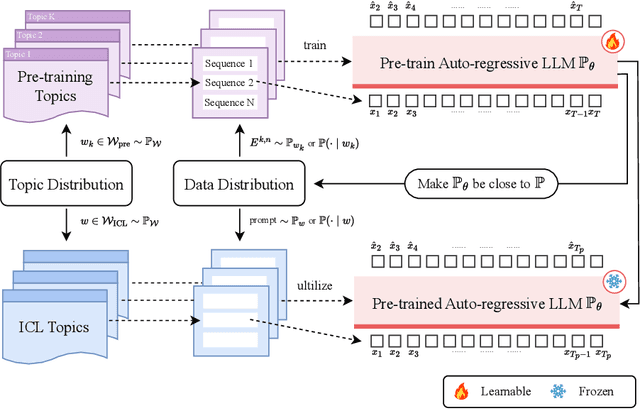



Abstract:Large language models (LLMs) have demonstrated remarkable in-context learning (ICL) abilities. However, existing theoretical analysis of ICL primarily exhibits two limitations: (a) Limited i.i.d. Setting. Most studies focus on supervised function learning tasks where prompts are constructed with i.i.d. input-label pairs. This i.i.d. assumption diverges significantly from real language learning scenarios where prompt tokens are interdependent. (b) Lack of Emergence Explanation. Most literature answers what ICL does from an implicit optimization perspective but falls short in elucidating how ICL emerges and the impact of pre-training phase on ICL. In our paper, to extend (a), we adopt a more practical paradigm, auto-regressive next-token prediction (AR-NTP), which closely aligns with the actual training of language models. Specifically, within AR-NTP, we emphasize prompt token-dependency, which involves predicting each subsequent token based on the preceding sequence. To address (b), we formalize a systematic pre-training and ICL framework, highlighting the layer-wise structure of sequences and topics, alongside a two-level expectation. In conclusion, we present data-dependent, topic-dependent and optimization-dependent PAC-Bayesian generalization bounds for pre-trained LLMs, investigating that ICL emerges from the generalization of sequences and topics. Our theory is supported by experiments on numerical linear dynamic systems, synthetic GINC and real-world language datasets.
Understanding Model Ensemble in Transferable Adversarial Attack
Oct 09, 2024



Abstract:Model ensemble adversarial attack has become a powerful method for generating transferable adversarial examples that can target even unknown models, but its theoretical foundation remains underexplored. To address this gap, we provide early theoretical insights that serve as a roadmap for advancing model ensemble adversarial attack. We first define transferability error to measure the error in adversarial transferability, alongside concepts of diversity and empirical model ensemble Rademacher complexity. We then decompose the transferability error into vulnerability, diversity, and a constant, which rigidly explains the origin of transferability error in model ensemble attack: the vulnerability of an adversarial example to ensemble components, and the diversity of ensemble components. Furthermore, we apply the latest mathematical tools in information theory to bound the transferability error using complexity and generalization terms, contributing to three practical guidelines for reducing transferability error: (1) incorporating more surrogate models, (2) increasing their diversity, and (3) reducing their complexity in cases of overfitting. Finally, extensive experiments with 54 models validate our theoretical framework, representing a significant step forward in understanding transferable model ensemble adversarial attacks.
Information-Theoretic Generalization Bounds for Transductive Learning and its Applications
Nov 08, 2023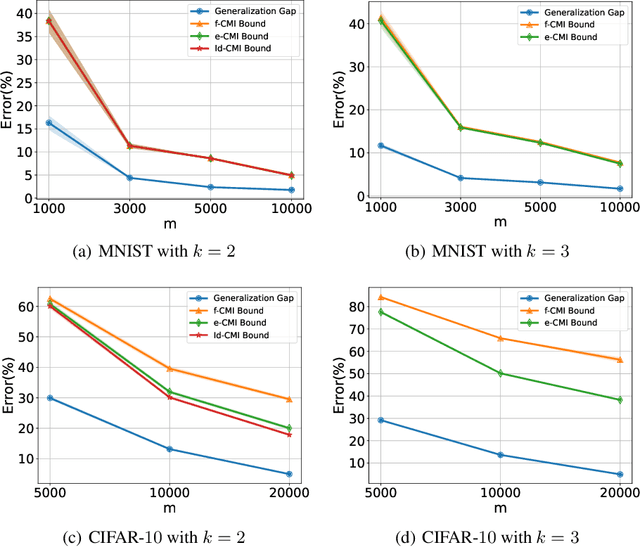
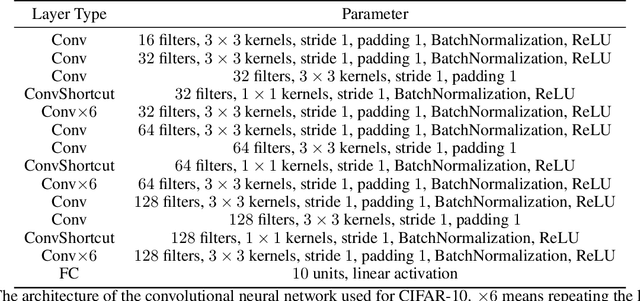
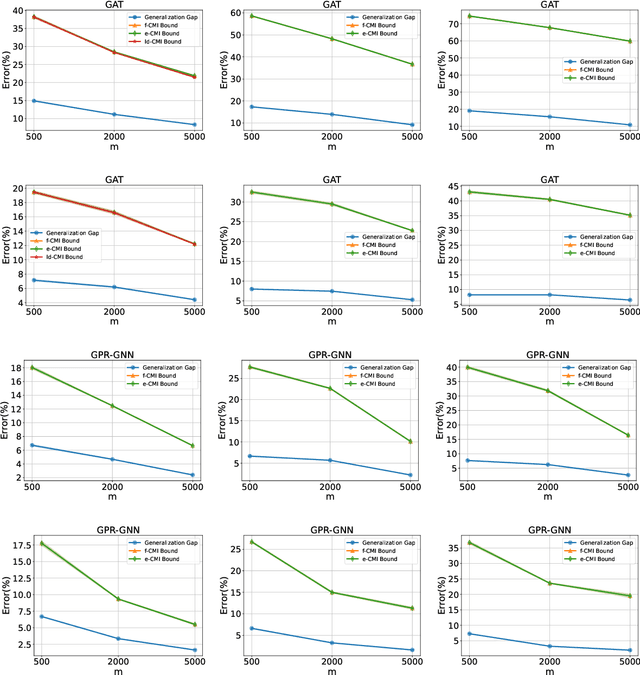
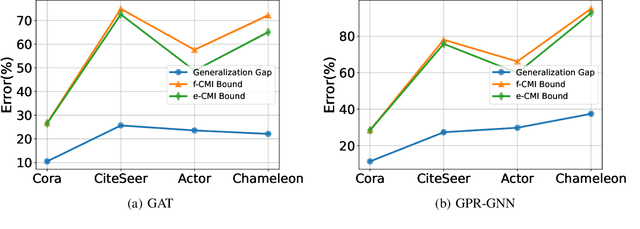
Abstract:In this paper, we develop data-dependent and algorithm-dependent generalization bounds for transductive learning algorithms in the context of information theory for the first time. We show that the generalization gap of transductive learning algorithms can be bounded by the mutual information between training labels and hypothesis. By innovatively proposing the concept of transductive supersamples, we go beyond the inductive learning setting and establish upper bounds in terms of various information measures. Furthermore, we derive novel PAC-Bayesian bounds and build the connection between generalization and loss landscape flatness under the transductive learning setting. Finally, we present the upper bounds for adaptive optimization algorithms and demonstrate the applications of results on semi-supervised learning and graph learning scenarios. Our theoretic results are validated on both synthetic and real-world datasets.
Perfect Alignment May be Poisonous to Graph Contrastive Learning
Oct 06, 2023
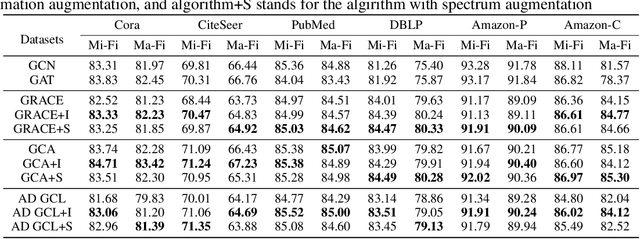

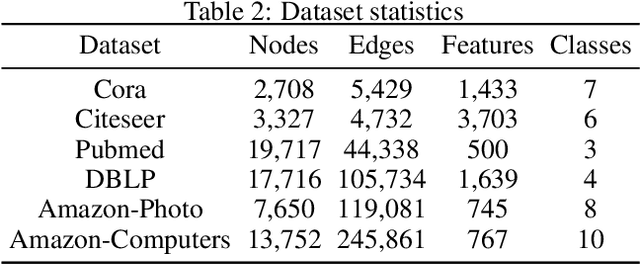
Abstract:Graph Contrastive Learning (GCL) aims to learn node representations by aligning positive pairs and separating negative ones. However, limited research has been conducted on the inner law behind specific augmentations used in graph-based learning. What kind of augmentation will help downstream performance, how does contrastive learning actually influence downstream tasks, and why the magnitude of augmentation matters? This paper seeks to address these questions by establishing a connection between augmentation and downstream performance, as well as by investigating the generalization of contrastive learning. Our findings reveal that GCL contributes to downstream tasks mainly by separating different classes rather than gathering nodes of the same class. So perfect alignment and augmentation overlap which draw all intra-class samples the same can not explain the success of contrastive learning. Then in order to comprehend how augmentation aids the contrastive learning process, we conduct further investigations into its generalization, finding that perfect alignment that draw positive pair the same could help contrastive loss but is poisonous to generalization, on the contrary, imperfect alignment enhances the model's generalization ability. We analyse the result by information theory and graph spectrum theory respectively, and propose two simple but effective methods to verify the theories. The two methods could be easily applied to various GCL algorithms and extensive experiments are conducted to prove its effectiveness.
DCPT: Darkness Clue-Prompted Tracking in Nighttime UAVs
Sep 19, 2023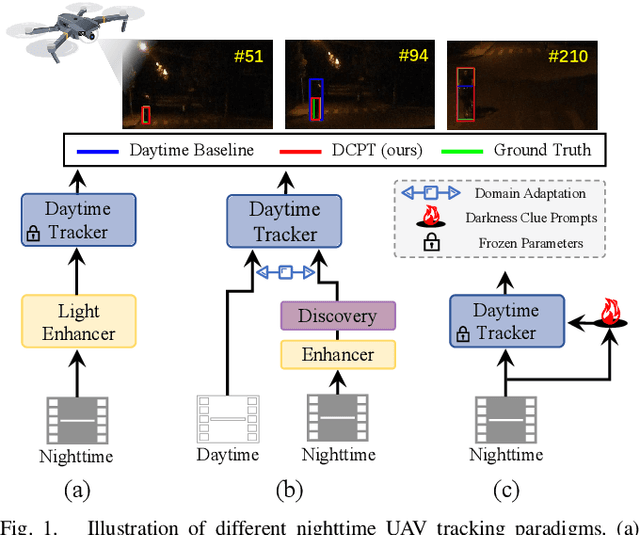
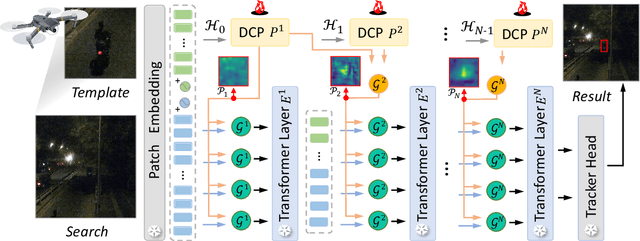
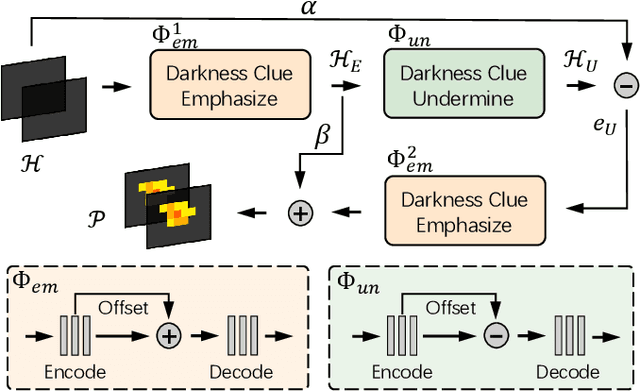
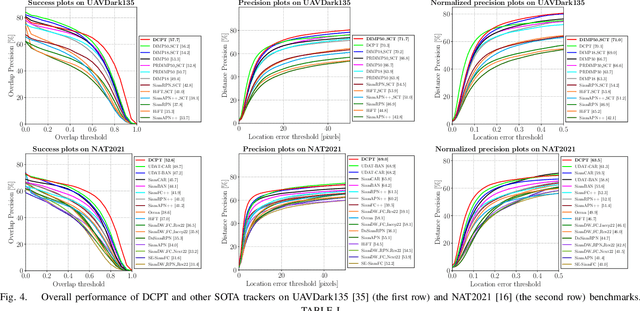
Abstract:Existing nighttime unmanned aerial vehicle (UAV) trackers follow an "Enhance-then-Track" architecture - first using a light enhancer to brighten the nighttime video, then employing a daytime tracker to locate the object. This separate enhancement and tracking fails to build an end-to-end trainable vision system. To address this, we propose a novel architecture called Darkness Clue-Prompted Tracking (DCPT) that achieves robust UAV tracking at night by efficiently learning to generate darkness clue prompts. Without a separate enhancer, DCPT directly encodes anti-dark capabilities into prompts using a darkness clue prompter (DCP). Specifically, DCP iteratively learns emphasizing and undermining projections for darkness clues. It then injects these learned visual prompts into a daytime tracker with fixed parameters across transformer layers. Moreover, a gated feature aggregation mechanism enables adaptive fusion between prompts and between prompts and the base model. Extensive experiments show state-of-the-art performance for DCPT on multiple dark scenario benchmarks. The unified end-to-end learning of enhancement and tracking in DCPT enables a more trainable system. The darkness clue prompting efficiently injects anti-dark knowledge without extra modules. Code and models will be released.
Can Large Language Models Empower Molecular Property Prediction?
Jul 14, 2023



Abstract:Molecular property prediction has gained significant attention due to its transformative potential in multiple scientific disciplines. Conventionally, a molecule graph can be represented either as a graph-structured data or a SMILES text. Recently, the rapid development of Large Language Models (LLMs) has revolutionized the field of NLP. Although it is natural to utilize LLMs to assist in understanding molecules represented by SMILES, the exploration of how LLMs will impact molecular property prediction is still in its early stage. In this work, we advance towards this objective through two perspectives: zero/few-shot molecular classification, and using the new explanations generated by LLMs as representations of molecules. To be specific, we first prompt LLMs to do in-context molecular classification and evaluate their performance. After that, we employ LLMs to generate semantically enriched explanations for the original SMILES and then leverage that to fine-tune a small-scale LM model for multiple downstream tasks. The experimental results highlight the superiority of text explanations as molecular representations across multiple benchmark datasets, and confirm the immense potential of LLMs in molecular property prediction tasks. Codes are available at \url{https://github.com/ChnQ/LLM4Mol}.
Towards Understanding the Generalization of Graph Neural Networks
May 14, 2023
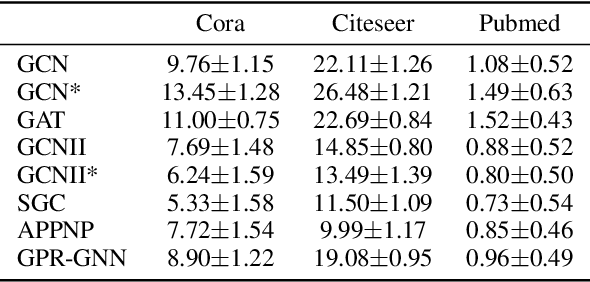
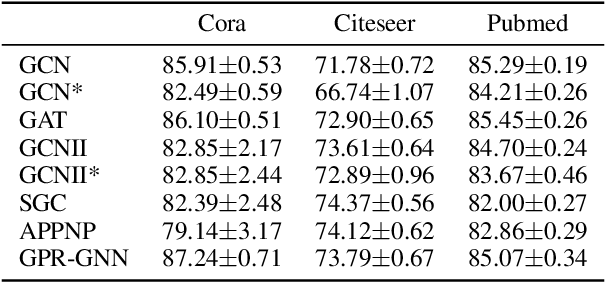
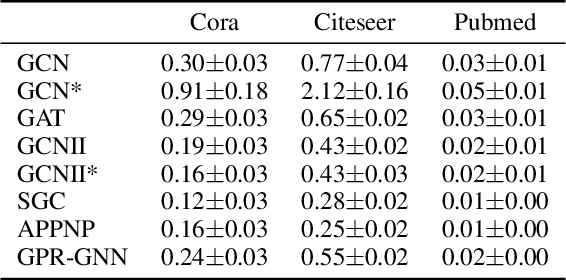
Abstract:Graph neural networks (GNNs) are the most widely adopted model in graph-structured data oriented learning and representation. Despite their extraordinary success in real-world applications, understanding their working mechanism by theory is still on primary stage. In this paper, we move towards this goal from the perspective of generalization. To be specific, we first establish high probability bounds of generalization gap and gradients in transductive learning with consideration of stochastic optimization. After that, we provide high probability bounds of generalization gap for popular GNNs. The theoretical results reveal the architecture specific factors affecting the generalization gap. Experimental results on benchmark datasets show the consistency between theoretical results and empirical evidence. Our results provide new insights in understanding the generalization of GNNs.
Multi-VAE: Learning Disentangled View-common and View-peculiar Visual Representations for Multi-view Clustering
Jul 07, 2021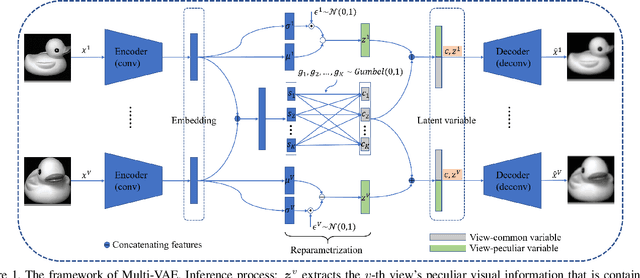
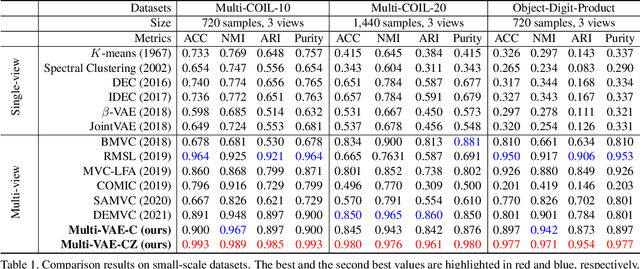
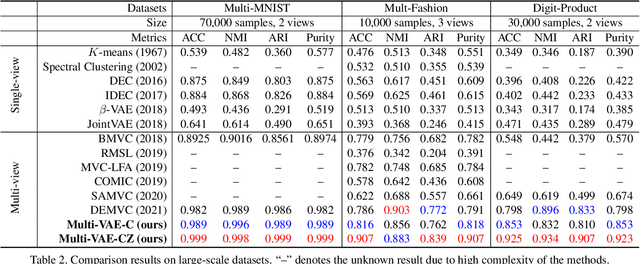
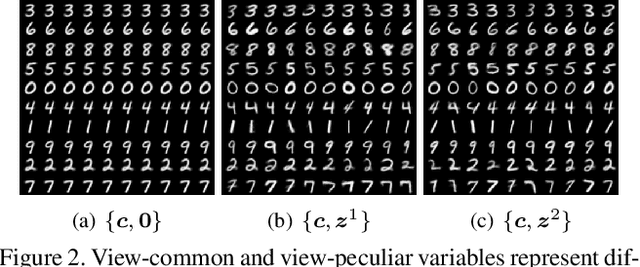
Abstract:Multi-view clustering, a long-standing and important research problem, focuses on mining complementary information from diverse views. However, existing works often fuse multiple views' representations or handle clustering in a common feature space, which may result in their entanglement especially for visual representations. To address this issue, we present a novel VAE-based multi-view clustering framework (Multi-VAE) by learning disentangled visual representations. Concretely, we define a view-common variable and multiple view-peculiar variables in the generative model. The prior of view-common variable obeys approximately discrete Gumbel Softmax distribution, which is introduced to extract the common cluster factor of multiple views. Meanwhile, the prior of view-peculiar variable follows continuous Gaussian distribution, which is used to represent each view's peculiar visual factors. By controlling the mutual information capacity to disentangle the view-common and view-peculiar representations, continuous visual information of multiple views can be separated so that their common discrete cluster information can be effectively mined. Experimental results demonstrate that Multi-VAE enjoys the disentangled and explainable visual representations, while obtaining superior clustering performance compared with state-of-the-art methods.
Contrastive Multi-Modal Clustering
Jun 21, 2021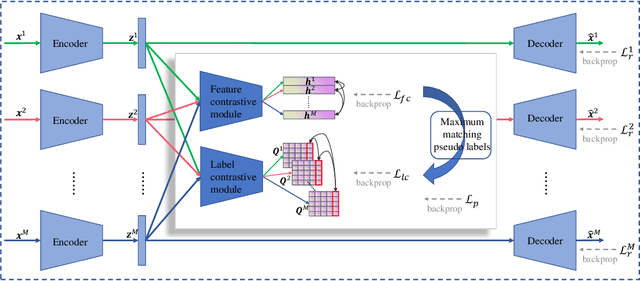
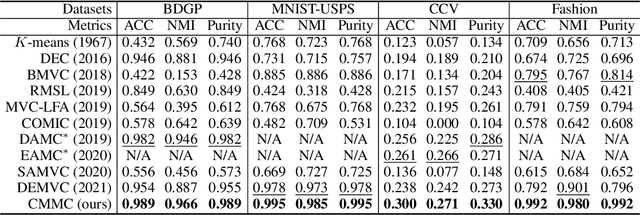

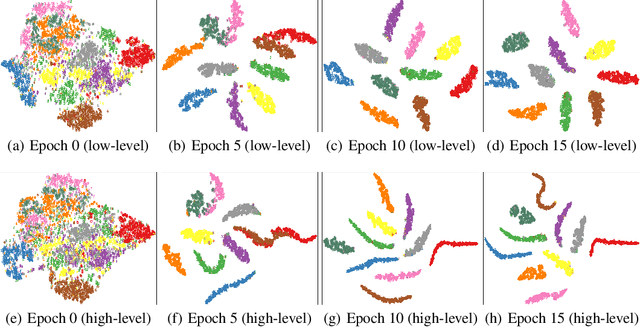
Abstract:Multi-modal clustering, which explores complementary information from multiple modalities or views, has attracted people's increasing attentions. However, existing works rarely focus on extracting high-level semantic information of multiple modalities for clustering. In this paper, we propose Contrastive Multi-Modal Clustering (CMMC) which can mine high-level semantic information via contrastive learning. Concretely, our framework consists of three parts. (1) Multiple autoencoders are optimized to maintain each modality's diversity to learn complementary information. (2) A feature contrastive module is proposed to learn common high-level semantic features from different modalities. (3) A label contrastive module aims to learn consistent cluster assignments for all modalities. By the proposed multi-modal contrastive learning, the mutual information of high-level features is maximized, while the diversity of the low-level latent features is maintained. In addition, to utilize the learned high-level semantic features, we further generate pseudo labels by solving a maximum matching problem to fine-tune the cluster assignments. Extensive experiments demonstrate that CMMC has good scalability and outperforms state-of-the-art multi-modal clustering methods.
Self-supervised Discriminative Feature Learning for Multi-view Clustering
Mar 28, 2021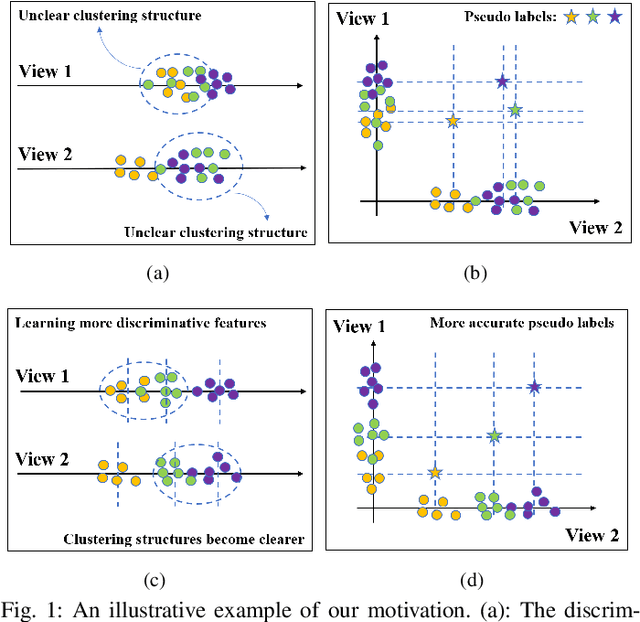

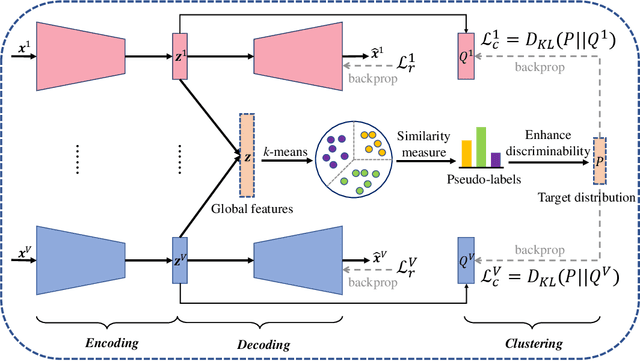
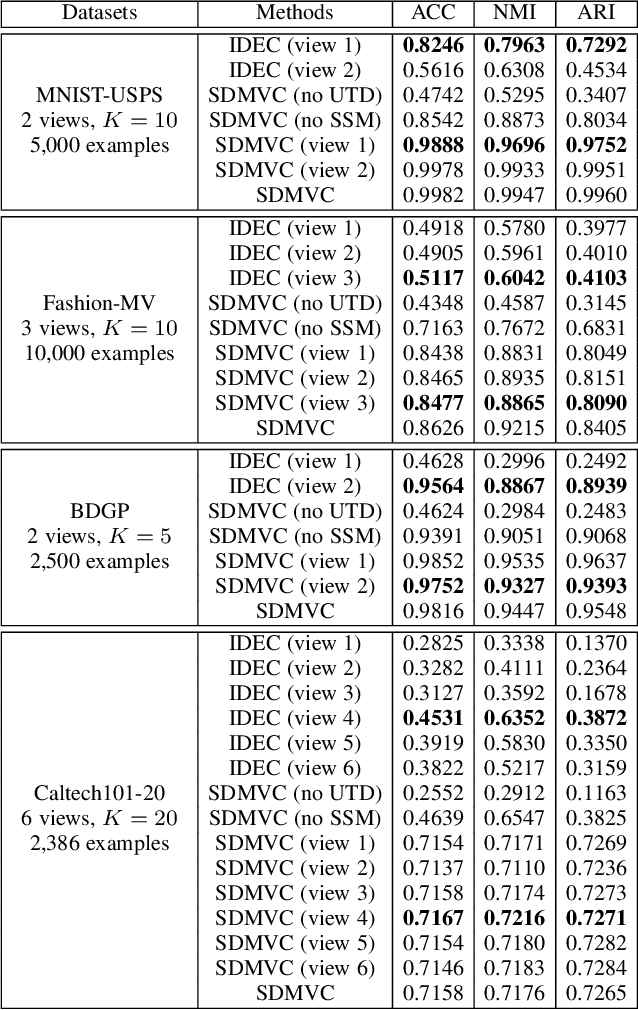
Abstract:Multi-view clustering is an important research topic due to its capability to utilize complementary information from multiple views. However, there are few methods to consider the negative impact caused by certain views with unclear clustering structures, resulting in poor multi-view clustering performance. To address this drawback, we propose self-supervised discriminative feature learning for multi-view clustering (SDMVC). Concretely, deep autoencoders are applied to learn embedded features for each view independently. To leverage the multi-view complementary information, we concatenate all views' embedded features to form the global features, which can overcome the negative impact of some views' unclear clustering structures. In a self-supervised manner, pseudo-labels are obtained to build a unified target distribution to perform multi-view discriminative feature learning. During this process, global discriminative information can be mined to supervise all views to learn more discriminative features, which in turn are used to update the target distribution. Besides, this unified target distribution can make SDMVC learn consistent cluster assignments, which accomplishes the clustering consistency of multiple views while preserving their features' diversity. Experiments on various types of multi-view datasets show that SDMVC achieves state-of-the-art performance.
 Add to Chrome
Add to Chrome Add to Firefox
Add to Firefox Add to Edge
Add to Edge